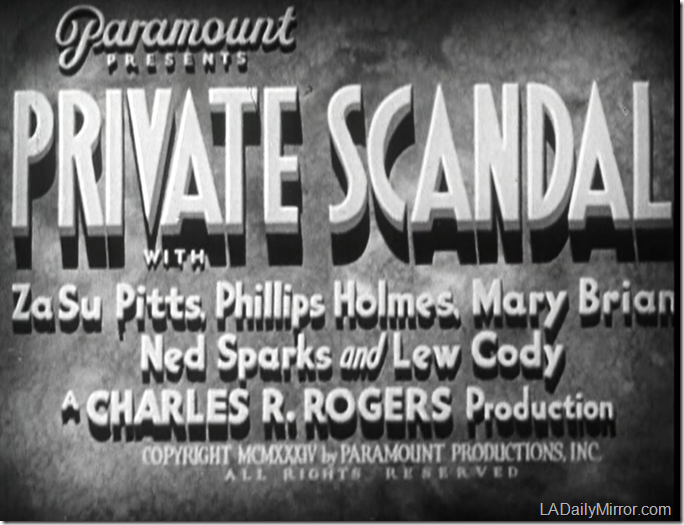
In case you just tuned in, I’m using Louella Parsons’ May 15, 1944, item on Rouben Mamoulian being removed as the director of “Laura” to take a long and meandering look at the making of the film. In examining Caspary’s career prior to “Laura,” we have found that by the 1930s, she had been the ghostwriter of a correspondence course on writing films, and had done a couple of novels and several plays, one of which, “Blind Mice,” was made into the 1931 film “Working Girls”
In her autobiography, “The Secrets of Grown-Ups,” she brags that between 1932 and 1938 she sold eight versions of the same story (“Suburb”) to the studios before Paramount told her to knock it off, all of them involving some permutation of what she called “a murder story without a murder.” As we will see in this post — and with the last of the films, “Scandal Street,” (1938) — this isn’t always true, but that’s how she described them.
We previously looked at the 1932 film “The Night of June 13,” based on the root story “Suburb,” and in the next post, we will next look at “Such Women Are Dangerous,” (released in June 1934).
The Making of “Laura” Part I | Part II | Part III | Part IV | Part V | Part VI | Part VII
The point in rummaging around in these forgotten and forgettable old chestnuts is that regardless of the many differences among these scenarios, “Laura” is another variation on “a murder story without a murder.”
True, there is a murder, but rather than the title character, Laura Hunt, the victim is a tangential figure (Diane Redfern,) who never appears on screen except in a brief shot of a magazine ad. She serves an essential function in the plot as the other characters discuss her, but the audience never gets to see her in action.
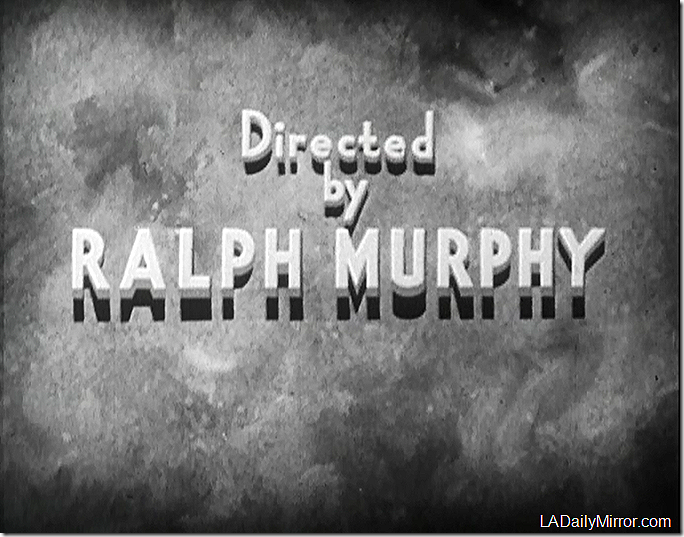
(Note: Preston Sturges biographer James Curtis points out that Caspary also provided the story for Sturges’ 1937 screwball comedy “Easy Living.” In that film, fortunately, no one gets killed.)
In this post, we will look at “Private Scandal,” a Paramount film released in May 1934, a month before “Such Women Are Dangerous” was released by Fox. (Caspary wasn’t shy about peddling her story to another studio, which may have caused Paramount to warn her to about the legal risks of plagiarism.)
Spoilers ahead.
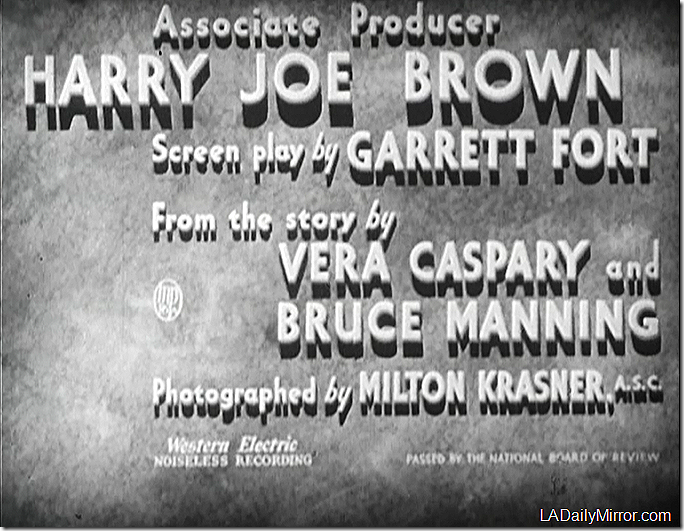
Directed by Ralph Murphy, “Private Scandal” has a script by Garrett Fort, adapted from a story by Caspary and sometime collaborator Bruce Manning, the husband of author Gwen Bristow, a friend who at that time was a reporter for the New Orleans Times-Picayune.
Caspary doesn’t mention the story (“In Conference” – Box 10 Folder 5 in the Caspary archives) or the film in her autobiography, which reflects her generally low regard for these films, which she said became increasingly mechanical.
In a macabre footnote, Lew Cody’s character dies in “Private Scandal,” the last of his movies to be released before he died in his sleep on May 31, 1934, at the age of 47. His final film, “Shoot the Works,” was released several months later and apparently its box office was unaffected by his death.
“Private Scandal” runs 62 minutes and in the original release it was paired with a live revue (Kate Smith in Los Angeles, “Holiday in Harlem” at the Apollo Theatre in New York) or a second feature such as “Let’s Talk It Over,” “The Merry Frinks” or an unidentified 30-minute western and comedy short.
But even at that modest length, it’s a long sit. The movie can’t seem to decide whether it’s a murder mystery or a comedy and there are plot points that are nothing short of bizarre. Several reviews of the day, particularly in smaller markets outside New York, complained of the convoluted plot and various “vulgarities” that made it unsuitable for what one review called “discriminating audiences.”
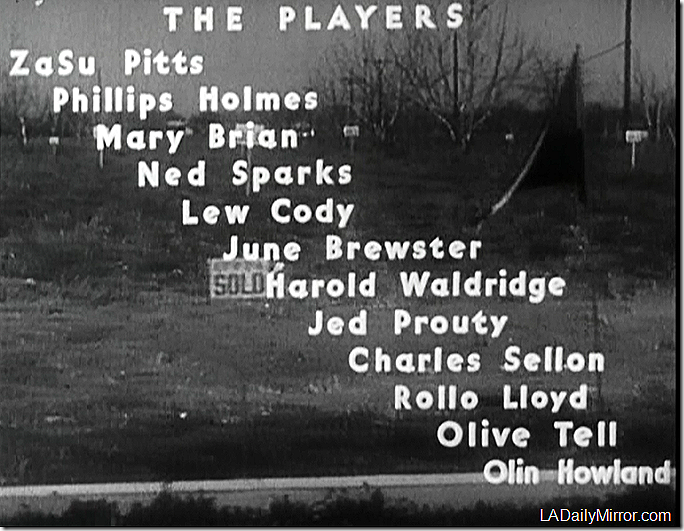
The cast list of “Private Scandal” is rather misleading because it’s an ensemble piece. ZaSu Pitts gets top billing, but she has a minor role with very little screen time – in fact her character is one of many in this film that could be eliminated without damaging the story. Ned Sparks gets fourth billing, but he has to carry the last 30 minutes of the movie, and as reviews of the day noted, that’s much more exposure than he usually received.
Here’s the plot, such as it is:

The film is set at a suburban housing development headed by B.J. Somers (Lew Cody) and most of the action takes place in the swank real estate office.
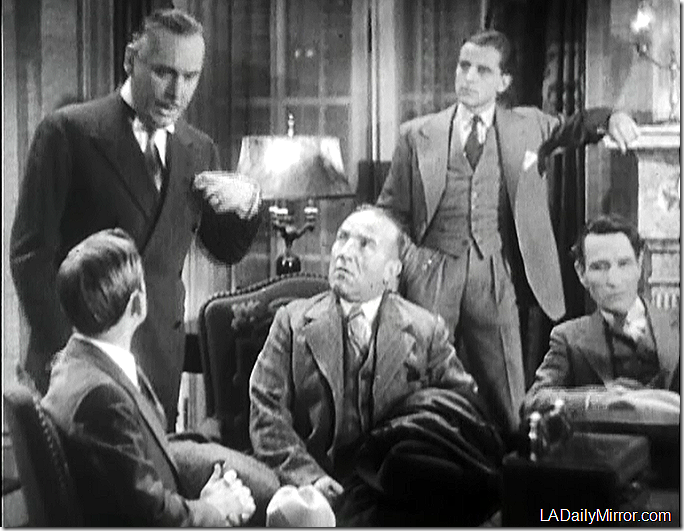
The angry clients: On the left, John Qualen, who plays Berger in “Casablanca,” on the right, Charles Middleton, more familiar as Ming the Merciless in “Flash Gordon.” Standing: Eden Gardens developer B.J. Somers (Lew Cody) and architect Cliff Barry (Phillips Holmes).
Somers tries to mollify some angry clients and their lawyer about the lack of progress on Eden Gardens, where not a shovel of dirt has been turned — except for the fancy realty office. The development’s handsome young architect Cliff Barry (Phillips Holmes) explains to them that these homes will allow residents to get away from filthy, crowded tenements in the city and Somers tries to inspire confidence about his devotion to the project.
The frustrated men leave after giving Somers until the next day to deliver on his promises.
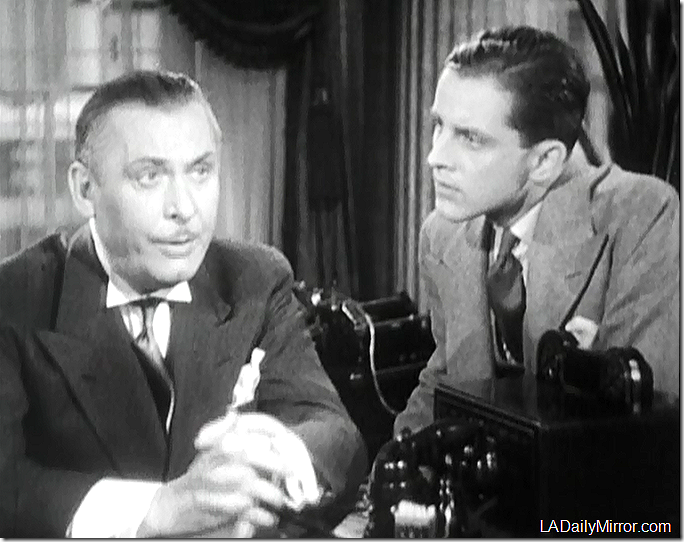
After they leave, Somers tells Barry that he has lost all the money for the development in bad investments. Once his oldest friend turns him down for a loan, the only solution, he says, is for him to kill himself so that his life insurance will pay off the debts.
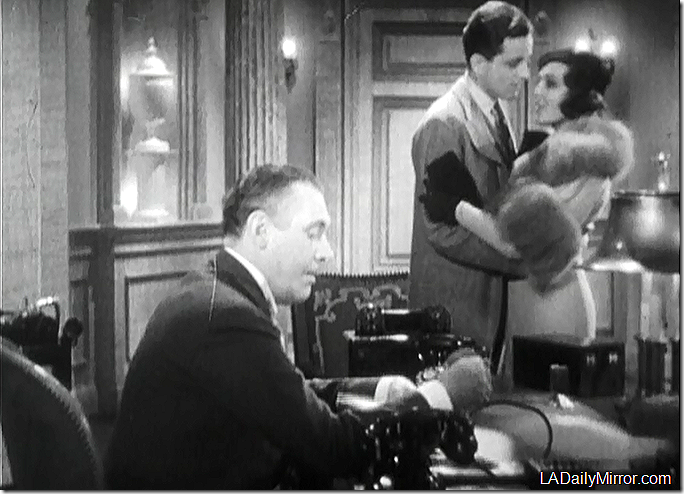
Adding to the complications is Barry’s involvement with Somer’s daughter Fran (Mary Brian).
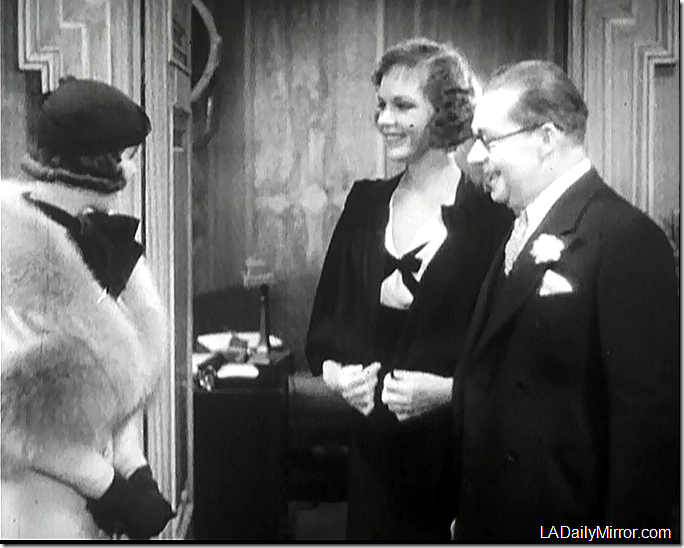
Here’s one of the “vulgar situations” the reviews in smaller markets complained about. Married real estate salesman H.R. Robbins (Jed Prouty) is having an affair with hardboiled switchboard operator Adele Smith (June Brewster) and at one point they arrive at work obviously hung over after spending the night together.
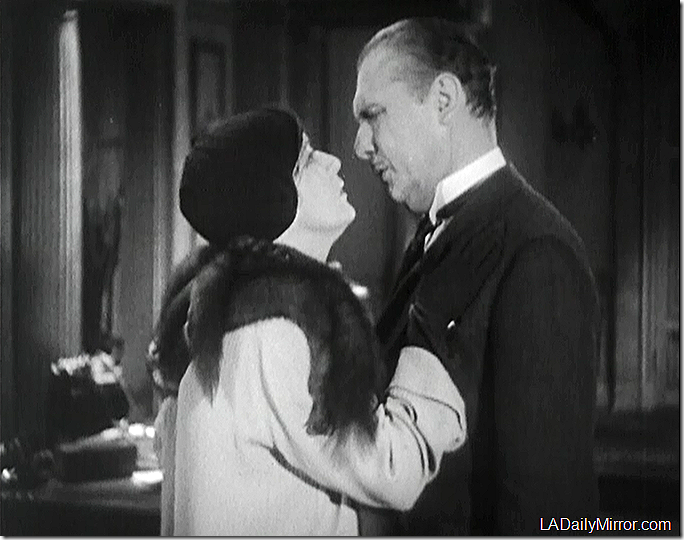
Another “vulgar situation” involves an affair between Somers and Deborah Lane (Olive Tell), who is also married. Lane offers to loan Somers the money, but he says it isn’t enough.
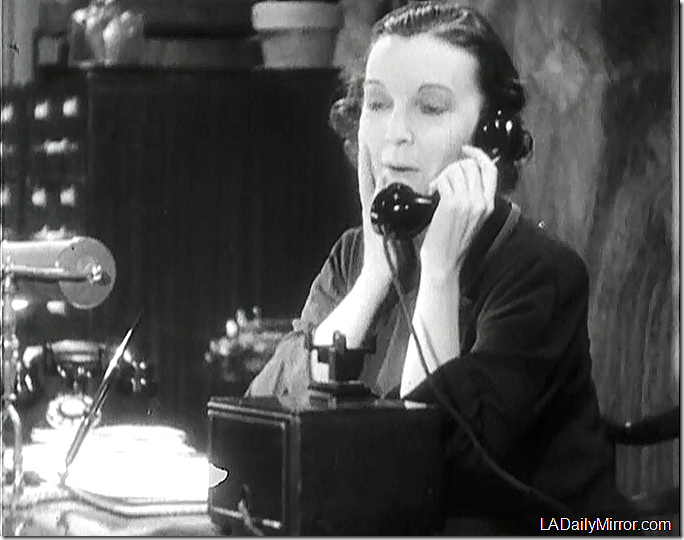
As Somers’ secretary, Miss Coates, ZaSu Pitts nervously flutters and flitters all through the film. There are more characters, but I’m leaving them out because they are merely distractions.
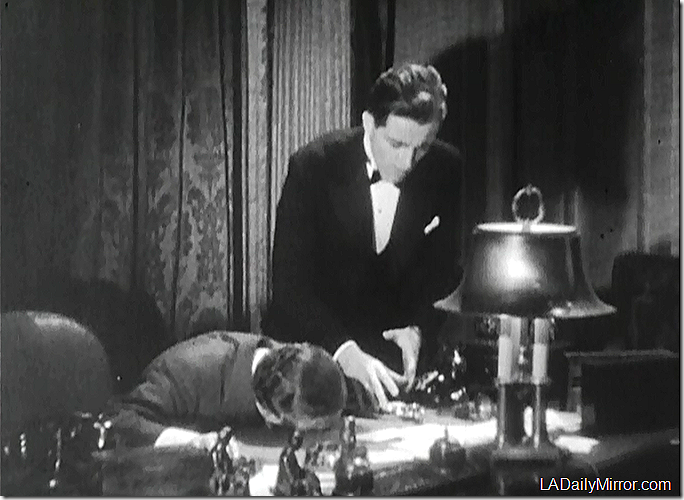
Lew Cody in his last film to be released before he died in his sleep. Another film, “Shoot the Works,” was released after his death.
After the meeting with the angry clients, Barry and Fran go out for dinner while Somers demurs. At the country club, Barry is worried about Somers and calls to check on him. Somers says he plans to kill himself and gives Barry instructions on making it look like a murder because his insurance policy has a suicide clause. Barry returns to the office, finds Somers dead and follows his instructions on how to make his (apparent) suicide look like a murder.
And Somers’ body stays in his office – moldering – through the next day as our ensemble of characters go about their business. Everyone believes that he is “in conference” and can’t be disturbed.
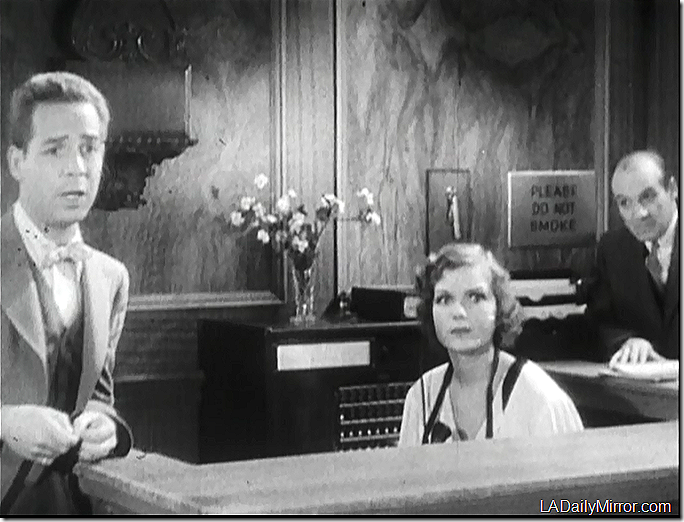
The utterly unnecessary character Jerome (Harold Waldridge), left, amorous switchboard operator Adele Smith (June Brewster) with pesky insurance agent Henry Lane (Rollo Lloyd).
And here is where the plot goes wildly off the rails. Our friend on the right, insurance agent Henry Lane (Rollo Lloyd), is the husband of Somers’ lover, Deborah. He shows up at the office on the pretense of discussing insurance with Somers when he actually confronted Somers and his wife the night before and shot him to death.
Why would he come back the next day, knowing that Somers is already dead? Why didn’t he shoot her too? Why didn’t she call the police? These are not questions that “Private Scandal” is interested in answering.
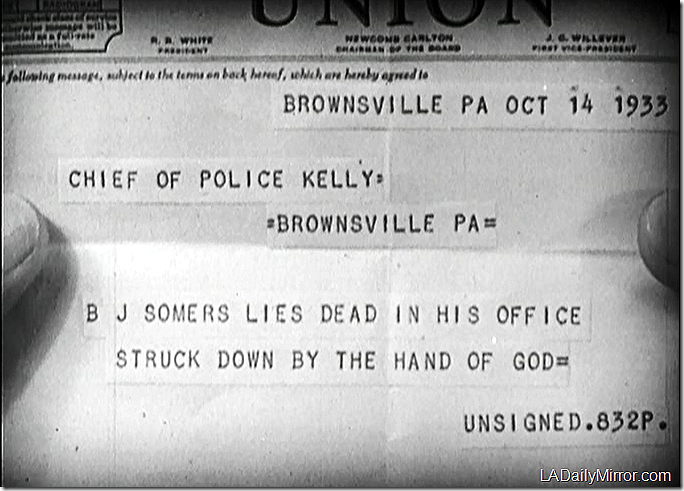
Did I say the plot goes off the rails? There’s more. Not only does Lane return to the crime scene after killing Somers, he also sends an anonymous telegram to the police.
And at this point we have the entrance of Ned Sparks.
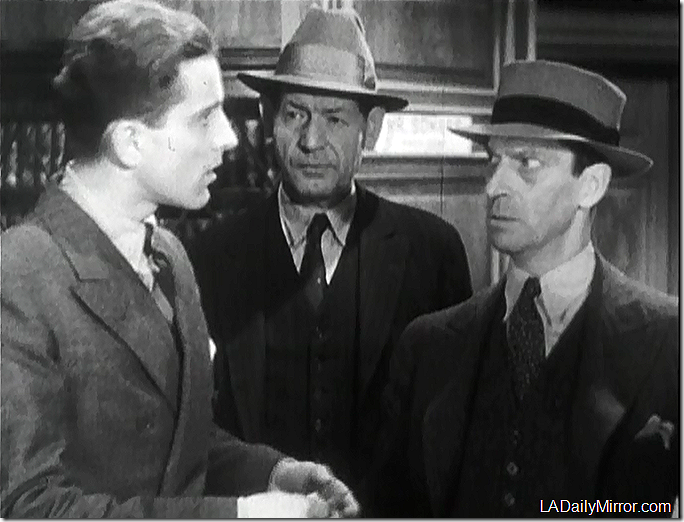
Barry, left, is questioned by Inspector Riordan (Ned Sparks, right) with George Guhl, center.
For the last 30 minutes of the film, Sparks struts the set in a rather stagey performance, snarling a string of snappy comebacks as what The Times called “a bellowing, deadpan detective.” The New York reviews generally considered his performance side-splittingly hilarious, while reviews in the outlying papers found him more overbearing and unpalatable. Except for the most ardent fan, 30 minutes of Ned Sparks in a straight role is an awful lot and I found it quite wearing, especially with such a far-fetched, convoluted plot.
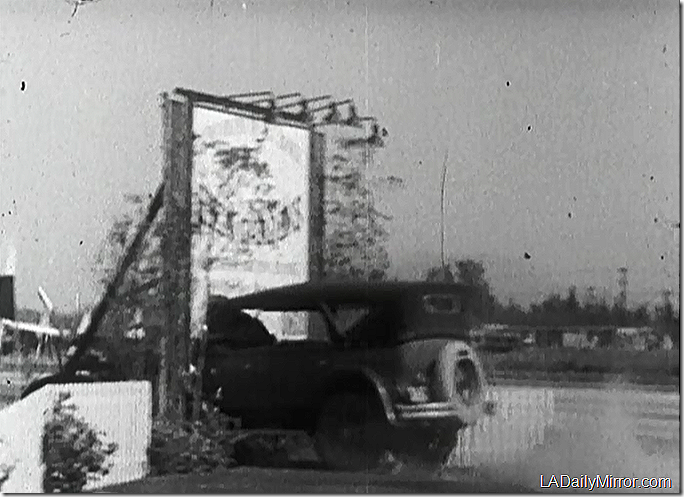
Riordan untangles the plot and killer Henry Lane is shot while trying to escape, crashing through the Eden Gardens billboard in a bit of painfully primitive symbolism.
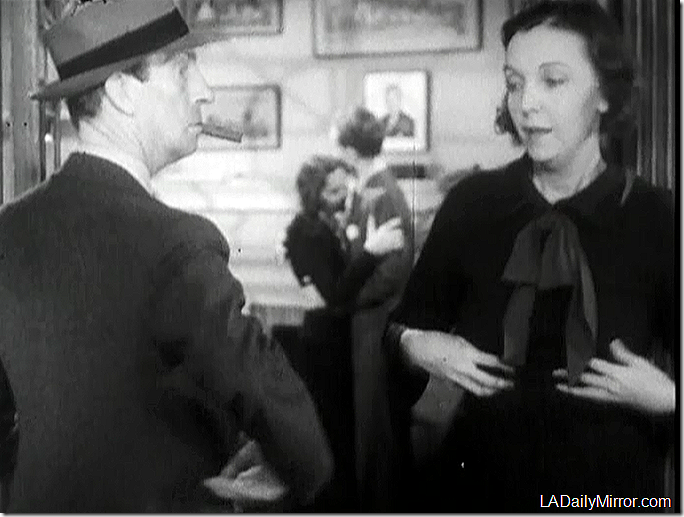
ZaSu Pitts gets to flutter and mutter one more “Ohhhh dearrrrr” before the film closes on the young lovers.
To be continued.


Phillips Holmes! Yum.
LikeLike
He joined the RCAF in World War II and was killed in a plane crash in 1942 at the age of 33.
LikeLike
The real estate development scam is an ancient plot device. See, e.g. THE COCOANUTS [1929] [“You can even get stucco. Oh boy, can you get stucco!”] and MISS GRANT TAKES RICHMOND [1949]. But it works in CHINATOWN and its sequel.
LikeLike
It is a tried a true plot element to be sure. 🙂
LikeLike
I love “Easy Living;” had no idea Caspary was involved in it.
LikeLike
She certainly was, although it’s likely Preston Sturges reworked the story. I’m doing a little research to find out how much.
LikeLike
Could you tell where they filmed the real estate development scenes?
LikeLike
I couldn’t. Maybe you would recognize the area. It’s not a great print (none of them are) and 98% of the film is interiors of the very posh realty office. There are only a few exterior shots and all they show is open land and the billboard. There’s one establishing shot (exterior) of the realty office, but it’s a generic building — it could even be something on the studio lot.
LikeLike